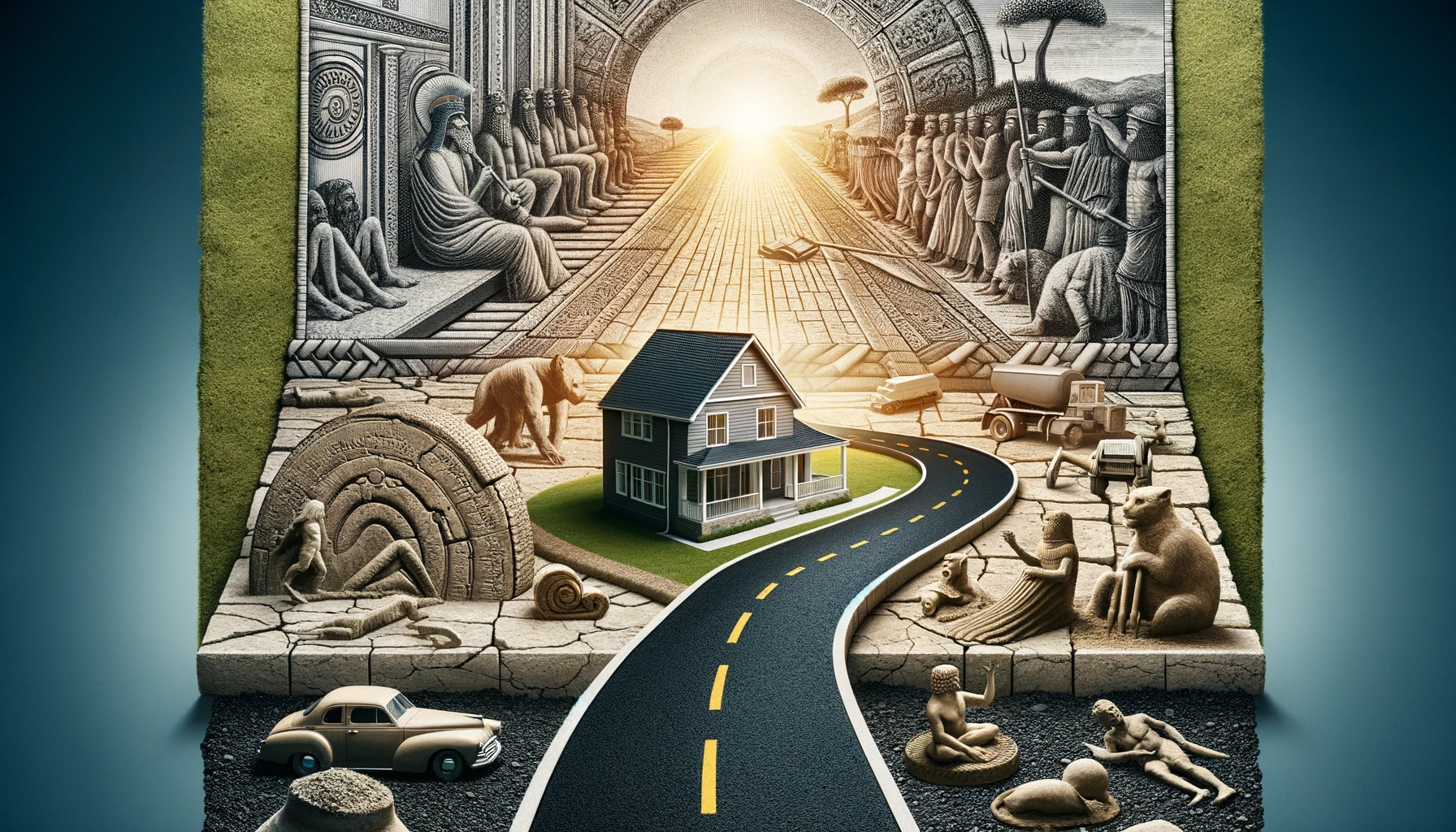
Asphalt driveways, the ubiquitous feature of the suburban landscape, owe their existence to a fascinating history that spans centuries and continents. From ancient roadways to the driveways of today, the evolution of asphalt surfaces is a testament to human ingenuity and the relentless pursuit of progress.
Ancient Beginnings
The story of asphalt begins not in a laboratory or during the industrial revolution, but in the ancient world. The earliest recorded use of natural bitumen (a crude form of asphalt) dates back to the 3rd millennium BC in Mesopotamia, where it was used as a waterproofing and adhesive material. Ancient civilizations recognized the natural binding properties of bitumen, using it to construct durable structures and roadways that could withstand the elements.
The Birth of Modern Asphalt
Fast forward to the 19th century, when the foundation for modern asphalt driveways was laid—quite literally—by Belgian chemist Edmund J. DeSmedt. In 1870, DeSmedt laid the first true asphalt pavement in the United States on Newark, New Jersey’s William Street. His method involved a more refined and consistent asphalt mixture than had previously been used, proving to be a turning point in road construction.
DeSmedt’s work didn’t stop there. He went on to pave Pennsylvania Avenue in Washington, D.C., showcasing the durability and practicality of asphalt paving to the nation. This high-profile project marked the beginning of asphalt’s rise to prominence in public and private construction projects.
The Spread of Asphalt Driveways
Asphalt’s journey from public roads to private driveways began in earnest in the early 20th century. The rise of the automobile culture in America, along with suburban expansion, created a demand for more and better roads, including driveways. Asphalt, with its cost-effectiveness, durability, and ease of maintenance, quickly became the material of choice for homeowners looking to add a driveway to their suburban homes.
The development of modern petroleum refining techniques in the 20th century further accelerated the use of asphalt driveways. These advances allowed for the mass production of asphalt, making it an even more attractive option for large-scale use in paving.
Why Asphalt?
The choice of asphalt for driveways comes down to several key advantages. It’s relatively inexpensive to produce and lay down, it can last for decades with proper maintenance, and it withstands a wide range of weather conditions. Moreover, asphalt driveways can be installed relatively quickly, reducing labor costs and inconvenience.
Today and Beyond
Today, asphalt driveways are a common sight in neighborhoods across the United States and beyond. They represent more than just a practical solution for vehicle access; they are a part of the architectural and cultural fabric of suburban life.
As we look to the future, the asphalt driveway continues to evolve. Innovations in materials science are making asphalt even more durable and environmentally friendly, with recycled materials and energy-efficient production methods leading the way.
The journey of asphalt from the ancient roads of Mesopotamia to the driveways of modern homes is a remarkable story of adaptation and innovation. As we drive down these smooth, durable surfaces, we travel a path that stretches back thousands of years, a testament to humanity’s enduring drive to improve and innovate.
Accompanying this journey through time is an image that captures the essence of asphalt’s evolution. From the ancient Mesopotamian road construction techniques to the sleek, modern asphalt driveways of today, this visual narrative highlights key milestones in the development of paving technology, showcasing the blend of history and progress that lies beneath our wheels.
